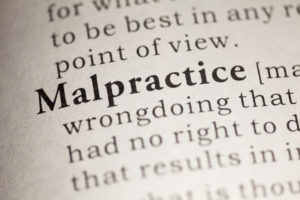Our injury law firm recently accepted a serious brain injury case on behalf of a driver who was in a horrible car accident which was caused by an ambulance/EMS service driver who ran a red light, allegedly while she was texting or talking on a cell phone-and the transport service was not handling any emergency call whatsoever. The question of whether electronic messaging, GPS systems, and similar devices are distracting ambulance/EMS drivers was addressed by Injuryboard colleague Greg Webb in a recent article titled Technology in Emergency Vehicles Could Be Seen As Distraction and I have previously discussed the epidemic of distracted driving car accidents.
Our client’s car was totalled and he was unconscious at the scene and was taken by rescue squad to the local hospital and treated for a closed head/brain injury. Our client now suffers permanent brain injury–he was uncertain about much of anything that occurred before the accident with the ambulance and didn’t understand who his wife was until weeks after he was released from the hospital.
In investigating the circumstances of the crash which involved a hospital to hospital medical transport service, I contacted the Virginia Department of Health to look into what type of insurance is required for ambulances that are licensed by the Virginia State Department of Health. I spoke with Michael Berg, who is the Department of Health State manager for regulation and compliance.
Mr. Berg referred me to the provisions of the Virginia ambulance licensing mandates, which set forth that ambulances must carry only the minimum liability insurance required for any driver in the state: $25,000 per person, $50,000 per accident (total insurance available even if multiple claims).
Because I was so stunned to learn that ambulances traveling our highways on emergency calls or otherwise are required to have no more than the minimum $25,000.00 per person/$50,000.00 per accident coverage I asked Mr. Berg if he believed this was adequate. While Mr. Berg never directly answered that question, he did say that this provision had been on the books for quite some time and suggested perhaps it had just never been addressed in a long time.
Here are two situations I learned about researching ambulance injury cases:
1. Boston I-93 Ambulance:
I was driving a 1995 Mercury Cougar in the lane to the immediate right of the median when the car stalled. I tried several attempts to start the vehicle but had no luck. I turned on the four way flashers and called a tow truck. I raised the hood of the vehicle and we stood about 100 yards behind the vehicle. After about a half hour, an Ambulance came barreling down the road in the lane I had broken down in, at what I would estimate at 60 MPH. There were no cars in front of the Ambulance so we had a crystal clear view of it. The Ambulance remained in that lane and struck my vehicle. My car did a 360 degree spin into the right lane and the ambulance flipped onto its side. The ambulance was transporting 2 victims from a pretty serious accident that occurred about forty minutes prior.
2. NIOSH ambulance case report:
In March 2002, an EMT aged 22 years who was driving and a paramedic aged 37 years were injured when their ambulance struck an oncoming vehicle head-on and overturned. The paramedic was riding unrestrained on the patient compartment squad bench while attending a patient during a nonemergency transport. A relative of the patient was seated in the rear-facing attendant’s seat and was wearing a seatbelt. During the collision, the unrestrained EMT driver sustained minor injuries. The paramedic struck the interior cabinets and shelves of the patient compartment. The EMT and the paramedic were transported to a hospital, where the EMT was treated and released; the paramedic was hospitalized and released 2 days later. The patient’s injuries included scalp and shoulder contusions and a shoulder laceration. The patient’s relative sustained minor internal injuries
Finally, here is actual footage of an ambulance on an emergency call crashing into a car at an intersection:
http://www.youtube.com/watch?v=d53NjaNQYJk
As an injury lawyer who has represented victims of very serious and catastrophic car accidents (and some that involved death) I am absolutely stunned that Virginia does not require at least $1 million of liability insurance for licensed ambulance transport services in the state. Or, half of that! We all know that ambulance services can be traveling at high rates of speed with their sirens blasting. In many circumstances, ambulance services may be immune from suits if acting without gross negligence on an emergency call-this is dependent on the state law where the accident occurs. The Virginia Supreme Court, in Couplin v. Payne ruled that: “In Virginia, a government agent entitled to the protection of sovereign immunity is not immunized from suit….Rather, the degree of negligence which must be shown to impose liability [on ambulance services of the state] is elevated from simple to gross negligence.” However, what if the ambulance service is not responding to an emergency call, but causes serious personal injury while operating the ambulance? This is precisely the circumstances that my client faces with a traumatic brain injury. It is absolutely amazing that the law in the State of Virginia does not require $1 million of liability insurance for such services as there are many private companies that are handling ambulance services under contracts with hospitals and/or with the State.
This is certainly a provision of Virginia State law that needs to be brought more in line with realities of how expensive healthcare and medical costs are as of 2010. Even a week stay in a hospital can exceed $25,000-the minimum insurance limit required of an ambulance service. Virginia legislators: time to recognize that ambulance services are licensed by the state, and that realistic minimum liability insurance limits of at least $500,000, if not 1 million dollars should be enacted.
About the Editors: The Shapiro, Cooper, Lewis & Appleton personal injury law firm, whose attorneys work out of offices in Virginia (VA) and North Carolina (NC), edits the injury law blogs Virginia Beach Injuryboard, Norfolk Injuryboard, and Northeast North Carolina Injuryboard as pro bono services.

Rick Shapiro has practiced personal injury law for over 30 years in Virginia, North Carolina, and throughout the Southeastern United States. He is a Board-Certified Civil Trial Advocate by the National Board of Trial Advocacy (ABA Accredited) and has litigated injury cases throughout the eastern United States, including wrongful death, trucking, faulty products, railroad, and medical negligence claims. During his three-decade career, Shapiro has won client appeals before the VA Supreme Court, VA Court of Appeals, NC Supreme Court, SC Supreme Court, WV Supreme Court, TN Supreme Court, and three times before the United States Court of Appeals for the Fourth Circuit, underscoring Shapiro’s trial achievements. In addition, he and his law firm have won settlements/verdicts in excess of $100 million. His success in and out of the courtroom is a big reason why he was named 2019 “Lawyer of the Year” in railroad law in U.S. News & World Report's Best Lawyers publication (Norfolk, VA area), and he has been named a “Best Lawyer” and “Super Lawyer” by those peer-reviewed organizations for multiple years. Rick was also named a “Leader in the Law, Class of 2022” by Virginia Lawyers Weekly (total of 33 statewide honorees consisting of lawyers and judges across Virginia). And in September 2023, Rick was selected as a recipient of the National Board of Trial Advocacy (NBTA) 2023 President’s Award. Although many nominations were submitted from across the country, Rick was just one of eight attorneys chosen by the prestigious National Board which certifies civil trial attorneys across the U.S. Rick was also recently named to Virginia Lawyers Weekly 2024 Virginia’s Go To Lawyers Medical Malpractice. The attorneys awarded this honor are nominated by their colleagues and chosen by a panel from the publication.










Comments for this article are closed.